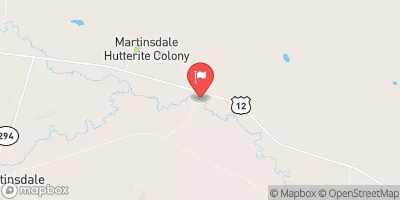Summary
Nearby activities include hiking, camping, and bird watching. Fishing tips include using dry flies and fishing early in the morning or late in the evening. The best time of year to visit is from late spring to early fall, with average temperatures ranging from 50-70 degrees Fahrenheit.
Weather Forecast
Nearby Streamflow Levels
Angling Safety Guidelines
Check local fishing rules, seasons, size limits, and license requirements to ensure legal and sustainable angling.
Handle Fish Responsibly
Use wet hands, minimize air exposure, and release fish gently to improve survival rates when practicing catch-and-release.
Choose the Right Gear
Match your rod, line, and tackle to the species and conditions to increase success and reduce unnecessary harm to fish.
Respect the Waterway
Avoid disturbing habitat, prevent bank erosion, and keep a safe distance from spawning areas to protect ecosystems.
Keep It Clean
Pack out all line, hooks, bait containers, and trash—discarded gear can injure wildlife and degrade waterways.
Related Links
Area Campgrounds
| Location | Reservations | Toilets |
|---|---|---|
 Hay Canyon Campground
Hay Canyon Campground
|
||
 Hay Canyon
Hay Canyon
|
||
 Indian Hill
Indian Hill
|
||
 Judith Guard Station Cabin
Judith Guard Station Cabin
|
||
 Judith Station Day Use Area
Judith Station Day Use Area
|
||
 Judith Station
Judith Station
|

 Middle Fork Judith River
Middle Fork Judith River
 Dipping Vat Pond
Dipping Vat Pond





